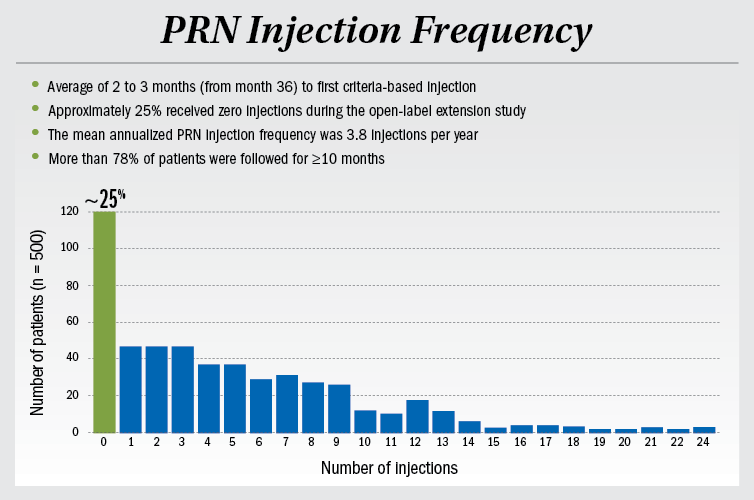Article
RIDE, RISE phase III results favorable for DME treatment
The open-label extension RIDE and RISE phase III studies of ranibizumab (Lucentis, Genentech) indicated that the beneficial results of the drug for treating diabetic macular edema were maintained over the long-term with less than monthly follow-up or injection treatment.
The open-label extension RIDE and RISE phase III studies of ranibizumab (Lucentis, Genentech) indicated that the beneficial results of the drug for treating diabetic macular edema were maintained over the long-term with less than monthly follow-up or injection treatment.

Dr. Ho
Reviewed by Allen Ho, MD, FACS
Phiadelphia-The RIDE and RISE phase III long-term extension studies of ranibizumab (Lucentis, Genentech) indicated that the beneficial results of the drug for treating diabetic macular edema (DME) were maintained over the long-term, according to Allen Ho, MD, FACS.
About 25% of the study patients did not need retreatment, and in most patients requiring further treatment, the drug could be administered on less than a monthly basis to maintain the visual acuity (VA) gains.
The results of the core RIDE and RISE trials demonstrated the efficacy of ranibizumab for treating DME with the 0.3-mg and 0.5-mg doses, Said Dr. Ho, director of retina research at Wills Eye Hospital, Philadelphia. Patients with DME who completed masked, monthly treatment with ranibizumab at month 36 of the core study then could enter the open-label extension trials. The investigators sought to answer the following clinically relevant questions:
- Can patients maintain visual gains achieved with initial monthly therapy when they transition to as-needed therapy?
- What frequency of retreatment is sufficient to maintain the vision gains?
Study logistics

All patients in the extension study were treated with 0.5 mg of ranibizumab as needed according to the treatment criteria, i.e., evidence of DME on optical coherence tomography images and visual worsening by five or more EDTRS letters compared with month 36 due to DME and not another cause. The visit interval could be extended from 30 days to 60 or 90 days for patients who did not require treatment based on these criteria, Dr. Ho explained.
He reported that the average time to the first criteria-based injection was 2 to 3 months (from month 36).
“Approximately 25% of the patients received no injections during the open-label extension study. The mean annualized as-needed injection frequency was 3.8 injections/year. More than 78% of patients were followed for 10 months or longer,” he said.
The gains in the best-corrected VA at month 36 of the core study were maintained in the extension study and the decreases in the central foveal thickness were generally maintained with as-needed treatment.
The key ocular adverse events in the extension study were similar to that in the core study with low rates of endophthalmitis (0% in extension study), retinal detachment and vitreous hemorrhage. In the core study, the incidence of Anti-Platelet Trialists’ Collaboration-type events and those related to systemic vascular endothelial growth factor inhibition were overall similar among the sham and ranibizumab groups.
In the extension phase, patients received only the 0.5-mg dose. The safety profile during the extension study showed similar serious adverse events to those reported in the core studies.
“Early treatment seems to be important,” said Dr. Ho, because patients who were initially randomly assigned to sham therapy never caught up to the patients who were initially randomized to active treatment.
“The extension studies showed the durability of the drug’s efficacy for treating DME,” he continued. “In roughly 25% of patients, no further treatment was required to maintain the mean VA outcomes achieved at the end of the 3-year core studies. In patients requiring further treatment, these data demonstrated that less-than-monthly treatment can be sufficient to maintain vision for the majority of patients.
“The safety profile of ranibizumab appeared similar to that observed in the controlled core studies,” Dr. Ho concluded.
Allen Ho, MD, FACS
Ho email: achomd@gmail.com
This article is adapted from Dr. Ho’s presentation at the 2014 meeting of the Association for Research in Vision and Ophthalmology. Dr. Ho received research grant support and is a consultant for Genentech, Regeneron, and Allergan.
Newsletter
Don’t miss out—get Ophthalmology Times updates on the latest clinical advancements and expert interviews, straight to your inbox.




